The Foreign Legion Operational Group (GOLE) was the last Foreign Legion operational battalion, created in Corsica in 1971. Little-known today, the unit was supposed to act as a task force (combined, if needed) capable of rapid intervention everywhere in the former French colonies. During its existence, the GOLE remained the only intervention unit of the then French Army to maintain its companies in different overseas territories at the same time. In 1977, the GOLE smoothly transformed into the 2nd Foreign Regiment. Read more about in the following article…

—
La version française de cet article:
Groupement Opérationnel de la Légion Etrangère
—
Introduction
In January 1968, the 2nd Foreign Infantry Regiment (2e REI) arrived in France as the last of the Foreign Legion regiments to leave their native North Africa. It was subsequently disbanded, as a result of the considerable reduction in the Legion’s strength following the end of the Algerian War in 1962. Thus, in France, only the 1st Foreign Regiment (1er RE) and the 1st Foreign Cavalry Regiment (1er REC) would represent that famous force. Other parts of the “Metropolitan” Legion were stationed in Corsica: the Foreign Legion Training Group (GILE) in Corte, with a detachment in Bonifacio (DLEB), and the 2nd Foreign Parachute Regiment (2e REP) in Calvi.
At the time, the 2e REP was practically the only Legion unit that could intervene quickly outside France. This was confirmed in 1969 when the regiment deployed to Chad, to carry out the first combat action involving legionnaires since 1962. The 1er RE – the Legion’s motherhouse – only sent a small intervention force, the Motorized Company (CMLE). Although hastily formed, the latter became yet another true fighting unit of this regiment, after the dissolution of the little-known Intervention Company in 1963.
The events in Chad demonstrated that in the new post-colonial era and with a dramatically reduced army, France still needed forces capable of intervening rapidly everywhere around the world. And that downsizing the Legion, a single branch of the French Army that was fully professional at the time, was not the best idea.
Thus, things began to move. After its return from Chad at the end of 1970, the CMLE was stationed in Bonifacio, Corsica. The goal was for it to become the nucleus of a future intervention force that was formally established by a ministerial decision ten weeks later, on March 9, 1971.
In April, one of the two volunteer companies of the DLEB/GILE, the 2nd, left Bonifacio for Corte. On June 1, it was replaced by a new combat company of the 1er RE, the 3rd.
Meanwhile, in May, the 4th Squadron of the 1er REC, the only infantry unit within this cavalry regiment at the time, underwent commando training at the Mont-Louis Center in order to be fully qualified as part of the Legion’s future intervention force. By the way, it was not a random selection; even this squadron had recently seen an overseas deployment. In December 1970, it became the very last unit of the French Army to guard French personnel at the large military base in Bou Sfer, Algeria, which was being handed over to the Algerian authorities.
Finally, on August 4, 1971, the Legion’s Bonifacio Detachment (DLEB) ceased to exist and gave way to the new intervention force in Corsica.
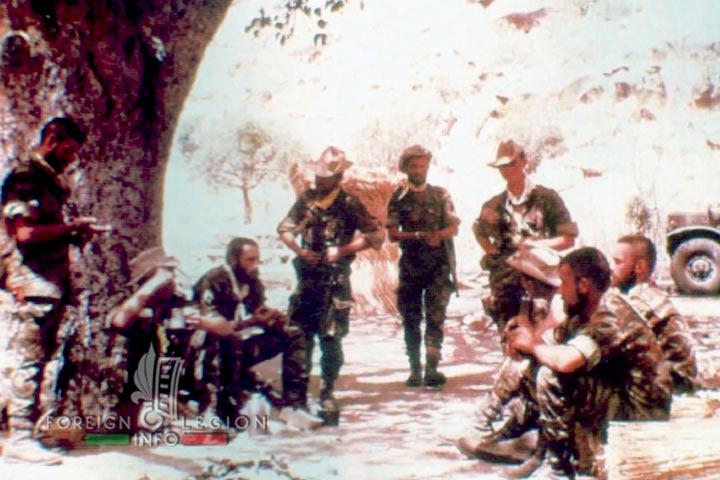

GOLE: Activation
On August 4, 1971, the Foreign Legion Operational Group (Groupement Opérationnel de la Légion Etrangère, GOLE) was activated in Bonifacio under Major Mougin. Assigned to the 1er RE in Aubagne, it was composed of an HQ and two combat companies: Captain Aubert’s CMLE and Captain Braun’s 3rd Coy. The GOLE was stationed at the Montlaur barracks in the Bonifacio Citadel, replacing the disbanded DLEB.
Intended for immediate interventions everywhere, the Operational Group’s main objective was to participate in the overseas missions assigned to the 11th Airborne Division, of which the 2e REP had already been a part. As a Legion unit, the GOLE aimed to provide the command with a constantly available element of professional soldiers.
The group had to maintain operational readiness through the pace of extensive and thorough qualification training. It was also responsible for the perfection of its specialists, whether they were drivers, radio operators, mortar operators, or snipers.
Equipped with important means of liaison and command, it was foreseen that the GOLE could not only act alone, but also as a combined force, with a variable number of units. For example, to include the aforementioned 4th Squadron, 1er REC in a very short time or, if requested, any additional unit.
Unfortunately, the reality was not so positive. The GOLE was a young unit that suffered from a lack of manpower, transportation, and necessary infrastructure. Unlike the already well-established regiment, the 2e REP, with its large, flat military base located in the open countryside, away from inhabited areas and close to a principal road, the GOLE was located in the middle of an old town, in a citadel that was difficult to access, and with very limited space in the barracks that still had to be shared with a GILE recruit company, the 1st.
Luckily, the Legion knows how to adapt to any adversity. Despite the complexities, GOLE legionnaires continued to participate in maneuvers and in training courses. They performed tactical and shooting exercises, climbing, combat sports, commando trails, as well as extensive amphibious warfare instruction. In addition to the technical enhancement of men, this training aimed to strengthen the companies’ cohesion. The goal was for the GOLE to become a particularly well-qualified unit able to fulfill its missions.
Meanwhile, new reinforcements from the GILE completed the platoons.
On October 1, 1971, the “motorized” CMLE, without vehicles since the Chad operations, changed its designation to the 5th Company. In fact, the GILE and GOLE were considered equivalents of the former infantry battalions, the last ones within the then Legion, whose companies should be therefore numbered 1, 2, 3, 4, and 5, 6, 7, 8, respectively.


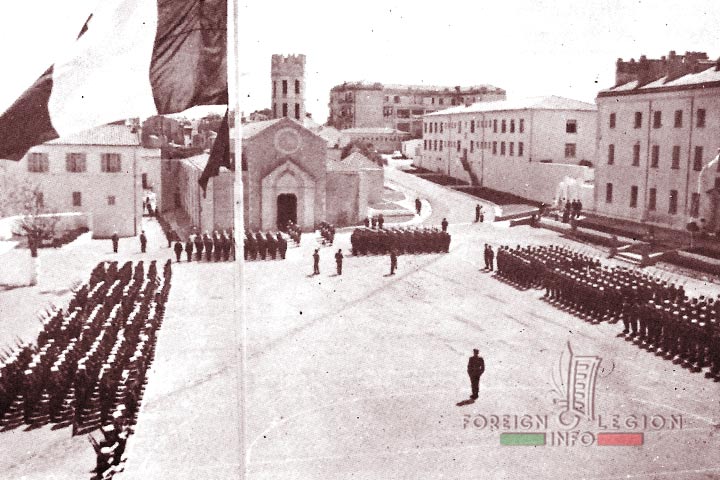
GOLE in 1972: 2nd Foreign Regiment
In 1972, the Legion was again reorganized. The Legion Group (GLE) was created on September 1, in Aubagne. The GLE, acting as the commanding formation, consisted of the 1st Foreign Regiment and the 2nd Foreign Regiment (2e RE). The latter, reconstituted in Corsica on this date, would take over the GILE and GOLE from the 1er RE.
Within the GOLE, a new unit was created: the Support Company (CAS), half-administrative, half-combat, including a heavy mortar platoon. Its origins can be traced back to the command detachment of the former DLEB, which the group absorbed in 1971.
In Corsica in October, the GOLE participated in the annual Franco-American exercise, Phiblex, with the Marines of the Sixth Fleet.
In early July of 1973, the 3rd Company corrected its number. To comply with the old rules for infantry battalions, it became the 6th Company. Captain Buisson later assumed command. The other two companies also replaced their commanders.
A few weeks later, on August 1, Major Forcin succeeded Major Mougin and took over the GOLE.
Since the situation in France’s former overseas territories was relatively calm at the time, the group continued to train and perform its duties as an intervention unit in Corsica only, including fighting large forest fires.
Composition of the GOLE in late 1973
- Commander : Major Forcin
- Support Company : Captain Flour
- 5th Company : Captain Dufour
- 6th Company : Captain Buisson

GOLE: Rotational Companies and Mayotte
In 1974, the Army Command decided to extend the system of “rotational” companies to increase the operational capability of French troops outside of France. Thus, a certain number of French military bases overseas (Djibouti, La Réunion, New Caledonia, etc.) were reinforced by a company of an intervention unit from Metropolitan France. This company, called the “rotational company,” remained there for a few months. It was subsequently relieved by another company of the same unit and returned to France.
This system of months-long rotations of entire companies seemed more effective than the old two-to-three-year individual stays that had been practiced in overseas units for decades. It gave elite troops the opportunity to live isolated far from the old continent and keep their operational readiness thanks to a service in inhospitable, less developed places. Simultaneously, the new system allowed them to avoid waiting years for a possible overseas deployment.
At that time, each formation of France’s Intervention Force was to send its companies to the same territory. The 2e REP, for instance, was assigned the French Territory of the Afars and the Issas (TFAI), now Djibouti, in the Horn of Africa. In October 1974, one of its companies — the 3rd — reinforced the 13e DBLE there and became the very first rotational unit of the Legion.
The GOLE would not stay behind. In late December, the Comoros archipelago, a French territory located in the Indian Ocean, between Madagascar and southeastern Africa, held a referendum on independence for its four islands. Three wanted it, while the last one, Mayotte, voted to remain a part of France.
At the time, a small Legion unit maintained order and the French presence in the archipelago: the Foreign Legion Comoros Detachment (DLEC), created in 1973. Considering the army’s new system for overseas units, and given the deteriorating political situation on the territory, it was decided to reorganize the DLEC and reinforce it as well with a fully operational rotational company.
Therefore, in January 1975, Captain Buisson, who had handed over his 6th Company in Corsica to Captain Tresti, was present in Mayotte with a reinforcement of 40 men from the GOLE. On the 24th, they formed the Group’s new company, the 7th, by absorbing former combat platoons from the DLEC. This company would become the rotational company, the first of its kind within the 2nd Foreign Regiment and, as such, within the Operational Group, to which Mayotte was “entrusted.”
The 7th Company, composed of 138 officers, NCOs, and legionnaires, would remain in Mayotte for nine months, until the end of October. Their most important “action” was the vaccination of the island’s population against the cholera epidemic that was then raging in the Comoros. At the same time, one of the company’s platoons was sent as reinforcement to the TFAI/Djibouti for ten weeks.
In the meantime, in Corsica, GOLE men were training and taking part in exercises, even bilateral ones, such as “Iberia” with Spanish paratroopers or “Double Base” with the British Marines’ 41 Commando. In addition, the CAS company passed under Captain Folio.
On August 19, Major Guignon, a former officer with the famous 1er REP, replaced Major Forcin and took command of the GOLE.
At the end of October, the 5th Company — now under Captain Migeon — left for Mayotte to replace the 7th Company as a rotational unit. The latter had to leave the territory for another French island in the Indian Ocean, Réunion, located east of Madagascar. The men stayed there for four weeks in support of public services because of a volcanic eruption. Finally, in late November, the 7th Company arrived in Bonifacio, ten months after its creation.





GOLE in 1976: The active year
The year 1976 became significant when it brought with it the first opportunity for the GOLE to present itself as a true intervention unit. In the TFAI/Djibouti, in early February, a school bus was kidnapped by local militants supported by the Somali government. The legionnaires already present in the TFAI — the 13e DBLE and a rotational company of the 2e REP — were alerted and sent to free 31 French children held hostages.
At the same time in Corsica, the GOLE was alerted and ordered to be ready to deploy to the TFAI to support the rescue mission.
On February 5, although the legionnaires of the 2e REP and the 13e DBLE had already succeeded in freeing the children the day before, the GOLE left for the TFAI. More precisely, this included the commander with his staff, the CAS with its Mortar Platoon, the 6th Company, and the 4th Squadron of the 1er REC, for the first time attached to the group. Together, some 400 men ready to strengthen the French military presence in Djibouti.
For the next four months, the “GOLEmen” (their nickname) patrolled the Somali border and participated in various tactical exercises. Unfortunately, during one such exercise, six GOLEmen were killed in the helicopter crash of May 24, 1976, only two weeks before the group’s return to Corsica.
After a month of collective leave, a new mission awaited the 6th Company. This time in Mayotte, where the DLEC was renamed DLEM in 1976, and where the 5th Company had to be replaced after a nine-month deployment.
As mentioned earlier, this Comorian island became an exclusive destination for GOLE units, while Djibouti became one for those of the 2e REP. However, even units of the Operational Group could be sent to this territory in the Horn of Africa. That was the case for the 7th Company, now commanded by Captain Briot. In October, the company arrived in Djibouti for four months as reinforcement, owing to the complicated political situation that preceded the anticipated independence of the country.
October 1976 was also marked by the hasty departure of the GILE companies from Corsica for mainland France to become once again part of the 1er RE. On the contrary, the 4th Squadron, 1er REC was temporarily transferred to Corsica to make room for recruits. It was stationed in Corte, along with the Specialist Instruction Company (CIS), the only GILE unit to remain assigned to the 2nd Foreign Regiment. The 4th Squadron returned to France two months later.


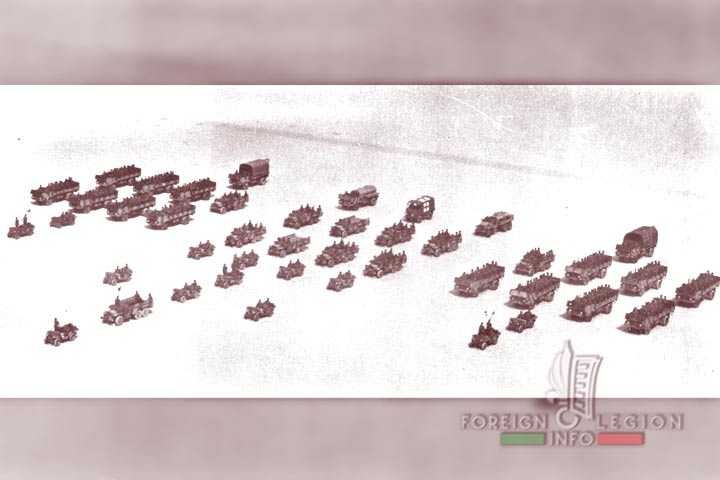



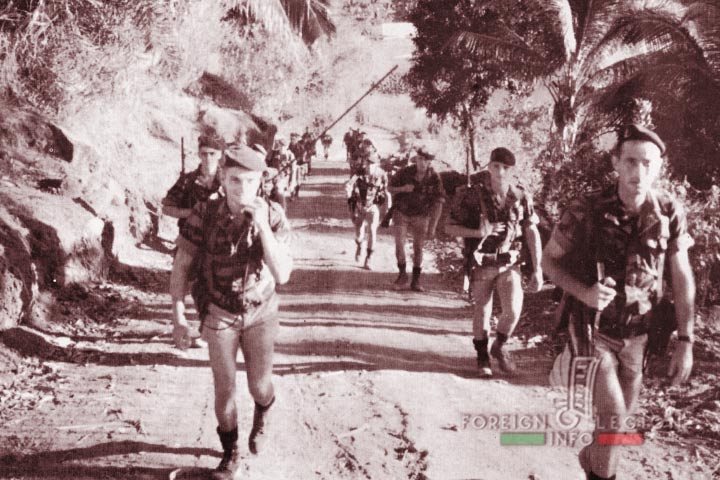



GOLE in 1977: Last months of the Group
The GOLE of freshly promoted Lieutenant Colonel Guignon therefore became the sole battalion of the 2e RE. This situation, bizarre both administratively and operationally, could not be sustained for long, in principle.
Yet, the working life of the group still went on. In late February 1977, the 7th Company left Djibouti and returned to Corsica. At the same time, the 4th Squadron, 1er REC left for Mayotte to replace the 6th Company, which had just spent seven months there. This was the first time when a 1er REC squadron acted as a modern rotational unit.
Between May and June, the majority of the GOLE partook in a large military exercise “Kalliste.” During thirty-five days, the legionnaires lived and operated in isolated groups throughout Corsica.
In mid-June, the 5th Company deployed to Djibouti as a reinforcement. Two weeks later, this French territory became an independent republic.
Nevertheless, the structural changes did not escape the 2e RE. A five-company unit with two different HQ staffs and lieutenant-colonels, that was a truly curious and untenable situation. A new major reorganization within the Legion was therefore planned.
On August 1, Lieutenant Colonel Guignon, the future commander of the 2e REP, left the GOLE. Major Villerouge replaced him and served as the Group’s interim commander until the end of the month.
In the meantime, in mid-August, the 7th Company moved to Mayotte to relieve Captain Filippi‘s 4th Squadron after six months spent there.
GOLE: Dissolution
On August 31, 1977, the Operational Group was administratively disbanded in Bonifacio. The three GOLE combat companies merged directly with the 2nd Foreign Regiment of Lieutenant Colonel Mougin, the very first commander of the GOLE. They retained their atypical numbers (5, 6, 7) for the next few years, until 1984. The CAS merged with the regimental HQ Company.
For the record, in mainland France, even the GILE was disbanded on the same day to be transformed into a training regiment (RILE) under Lieutenant Colonel Forcin, once a second commander of the GOLE.
The former GOLE companies would continue to perform their tasks in Corsica, Mayotte, Djibouti, and again in Chad (since 1978), where the idea of establishing an operational task force of the Legion had been born. The new conflict in Chad also marked the beginning of the involvement of other 1er REC squadrons in the intervention forces.
It is worth mentioning that the GOLE was the only intervention unit of the then French Army to maintain its companies in two different overseas territories at the same time, and the only French Army unit capable of simultaneously engaging a detachment in the ranks of France’s Intervention Land Force and another one in those of the Territorial Operational Defense.
As for the “rotational company” system, although it remains in the French Army even nowadays (in 2022), it is now somewhat different. Since the early 1980s, the overseas territories have not been associated with a specific intervention unit. Also, the period of a common deployment has been unified to four months.
However, today’s young legionnaires still have the chance to go to distant horizons and operate in isolation, just like their GOLE predecessors nearly five decades ago.



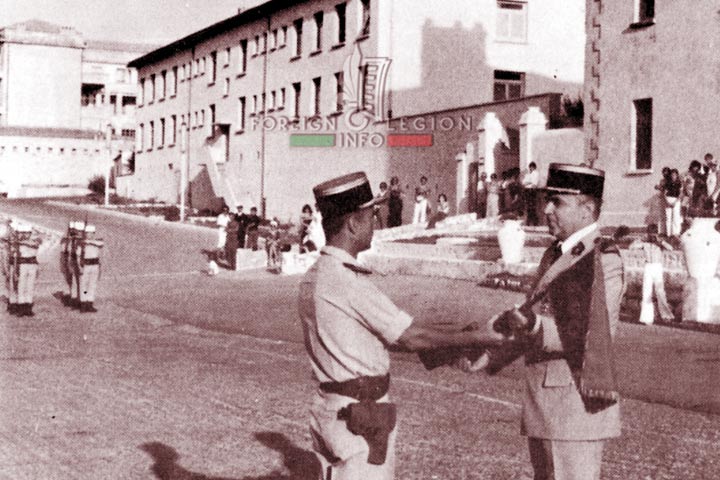

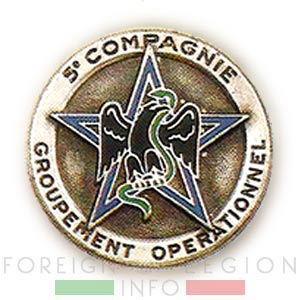

———
Main information & images sources:
Képi blanc magazines
P. Cart-Tanneur & Tibor Szecsko: La Vieille Garde (Editions B.I.P., 1987)
———

You may support this website at any time through our store. Thank you.
EU-based readers can visit our EU-based shop, to avoid import charges.
———
Foreign Legion’s other disbanded units after 1945:
61st Engineer-Legion Mixed Battalion
3e BMLE: 3rd Foreign Legion Task Force
BLEM: Foreign Legion Madagascar Battalion
2nd Foreign Cavalry Regiment
3rd Foreign Parachute Regiment
4th Foreign Infantry Regiment
History of the 5th Foreign Regiment
6th Foreign Infantry Regiment
—
The page was updated on: October 3, 2022
